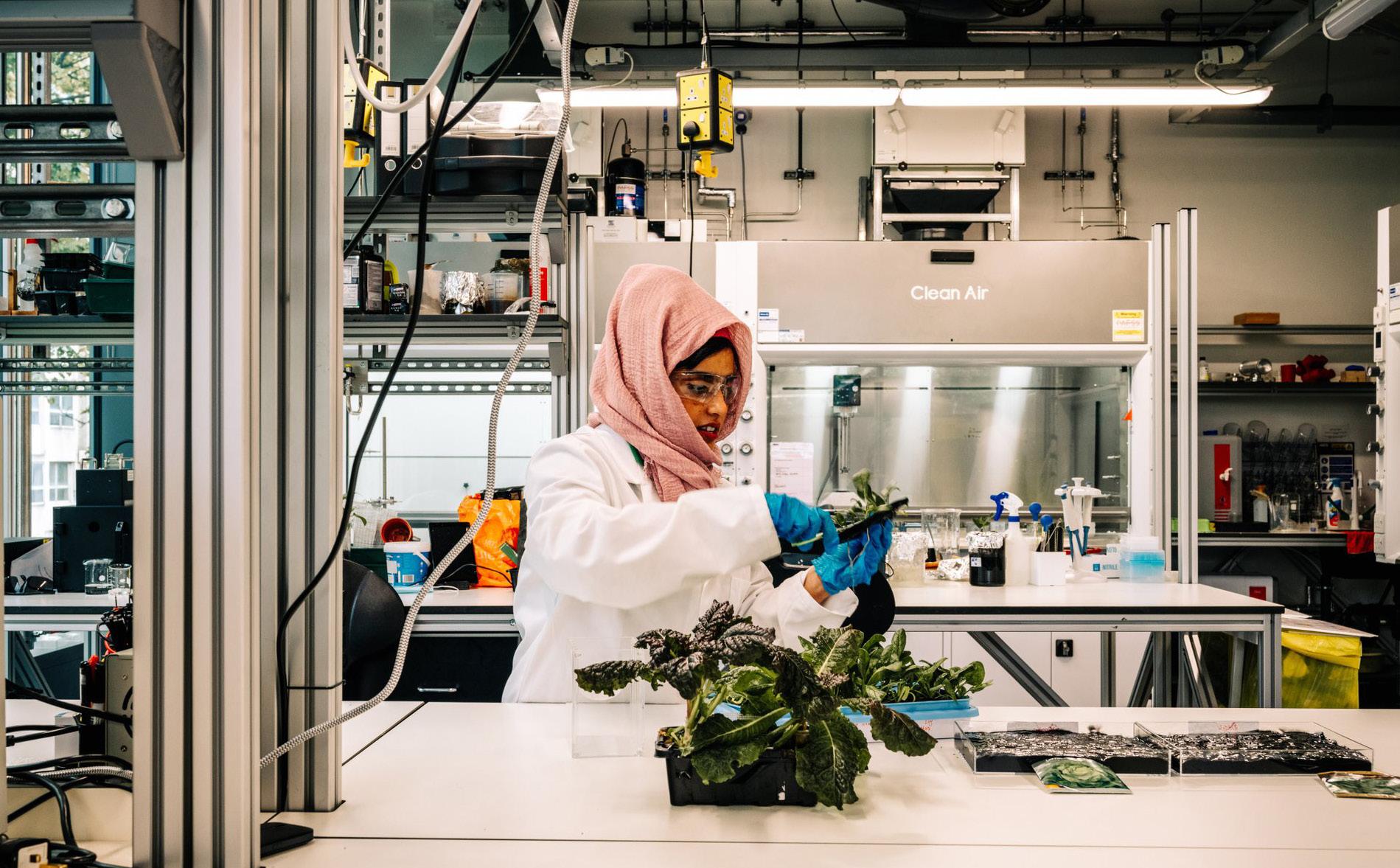
2 minute read
Foreword by Lou Cordwell, Chair of Greater Manchester Local Enterprise Partnership
Foreword – Lou Cordwell, Chair of Greater Manchester Local Enterprise Partnership
What is the future for global cities and how is innovation in advanced materials shaping a world which is greener, better connected and more equal?
Advertisement
The illustration on the front of this white paper provides a futuristic view of one such city region.
Imagine Greater Manchester in 2038, enabled by low carbon economic growth, advanced materials and initiatives including Innovation Greater Manchester, which seeks to ensure that every community in the North can share in the socio-economic benefits of Research and Development (R&D) activity.
Brought to life by illustrator Barney Ibbotson, this futuristic vision represents the views of leading commentators from the fields of science, industry and academia, who recently participated in a GM LEP roundtable discussion in partnership with MIDAS and The University of Manchester and hosted by Alok Jha, science correspondent with The Economist. Panellists were: • Professor Dame Nancy Rothwell,
GM LEP board member and
President and Vice-Chancellor of
The University of Manchester • Tim Newns, CEO of MIDAS,
Greater Manchester’s inward investment agency • James Baker, CEO of Graphene@
Manchester • Dr Beenish Siddique, Founder and CEO of AEH Innovative
Hydrogel Ltd, a company which is researching new practical applications for advanced materials.
By 2038, they suggest a future of vertical urban farms; rainwater purification units utilising graphene membranes; road surfaces which defy potholes and charge the batteries in the driverless lightweight vehicles which pass along them.
The air is clean and people have a vast array of career opportunities in innovative industries that have not yet been imagined.
Transportation is net carbon neutral, integrated, affordable and efficient.
The cityscape remains familiar but incredible new architectural structures are possible due to enhanced building materials which are lighter, stronger and conduct heat and power.
Healthcare has been transformed by the ability to produce intricate replacement body structures.
As a result, Greater Manchester is a magnet for talent and investment and the city-region’s effort to tackle global challenges has supported the fight against climate change.
Pre-pandemic, Greater Manchester set an ambitious target of achieving carbon neutrality by 2038 – 12 years ahead of UK national targets. The Greater Manchester Economic Vision outlined a blueprint for a “fairer, greener, growing” economy achieved through tackling inequalities and innovation.
With specialist expertise in advanced materials and a commitment to green growth, Greater Manchester now has an opportunity to influence global innovation as we move towards that low carbon future.
This opportunity goes beyond shaping the future built environment. Identifying sustainable energy sources, solving transport challenges and answering fundamental questions about how we will provide a growing global population with food and water are vital.
Innovation to create new products and services built around advanced materials will also create opportunities for thousands of new skilled jobs in industries which are only now being imagined.
At the heart of the Greater Manchester Economic Vision, Innovation Greater Manchester is a blueprint for a partnership with Government to stimulate R&D investment and level up the North, generating a £7 billion economic benefit and creating up to 100,000 jobs across the city-region.
This document captures some of the insight and intelligence provided by key thinkers and is intended to stimulate further conversation about Greater Manchester’s role in influencing the future for global cities.
Greater Manchester is already a fantastic place to live, work, invest and study. Join us in imagining an even better future.






